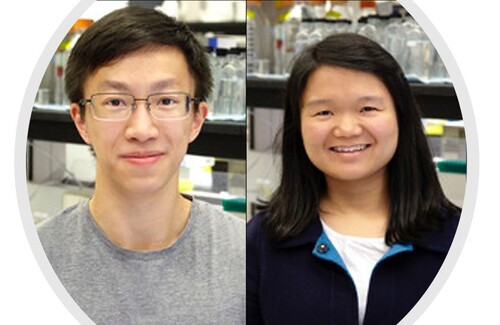
The Pyle Lab resolved cryo-electron microscopy (cryo-EM) structures of an intron ribonucleoprotein (RNP) poised to insert into its structured DNA target, revealing that the RNP pre-organizes to react with the DNA through sequence and structure recognition. Published in Science and led by co-authors Kevin Chung and Ling Xu, the study is titled “Structures of a mobile intron retroelement poised to attack its structured DNA target.” Other authors include Pengxin Chai and Swapnil Devarkar of MB&B and Junhui Peng of The Rockefeller University.
Retrotransposons are genetic elements that reverse transcribe their RNA and subsequently integrate into the host genome by reversal of forward splicing. Group II introns are retrotransposon ribozymes that form RNP complexes to facilitate their own retrotransposition. The recognition steps guiding post-splicing insertion into DNA have remained largely unclear. Now, the structure resolved by Chung et al. shows that retrotransposition proceeds by a tertiary complex formed by the ribozyme, a protein mobility factor, and the DNA substrate.
By capturing the RNP both before and after DNA targeting, the authors found that the intact group IIC intron-maturase retroelement is ideally positioned to insert into a DNA stem-loop motif. The maturase helps rigidify active elements of the RNP, which relies on shape and base pairing sequence recognition to integrate into its DNA substrate. Interestingly, this RNP structure looks nearly identical even in the absence of the DNA target.
The study highlights features of a prototypical retroelement and supports the hypothesis that group II introns are ancient elements of genetic diversification, thus furthering our understanding of retroelement structure, function, and proliferation.
By Brigitte Naughton